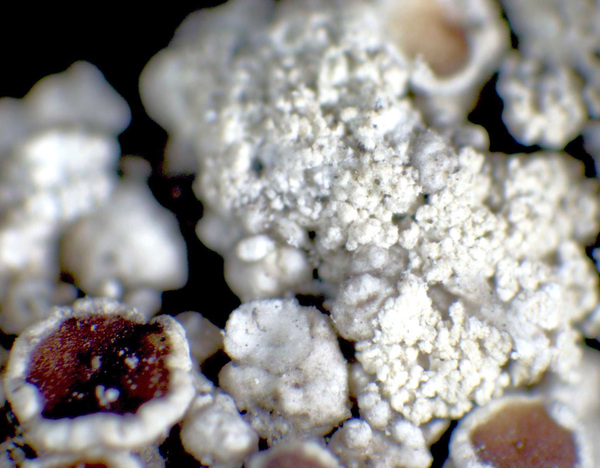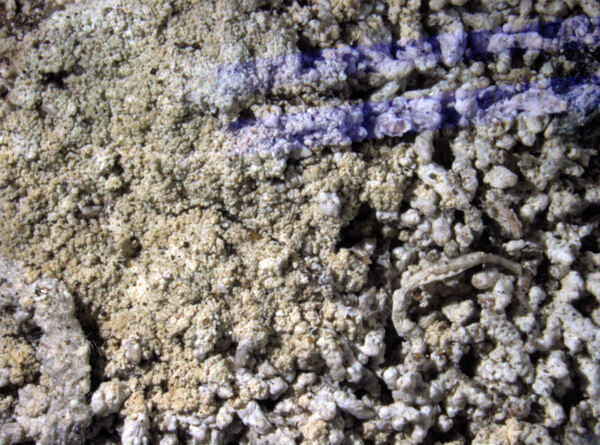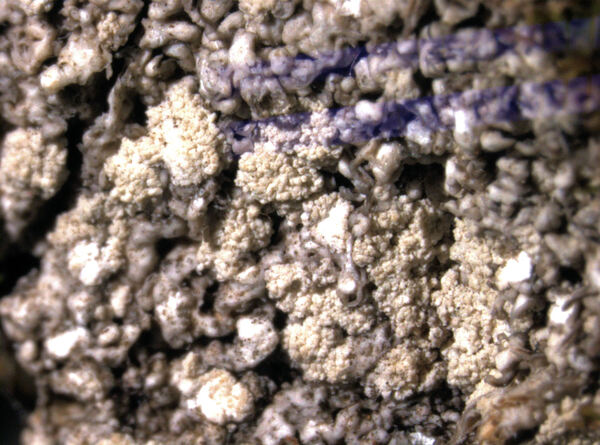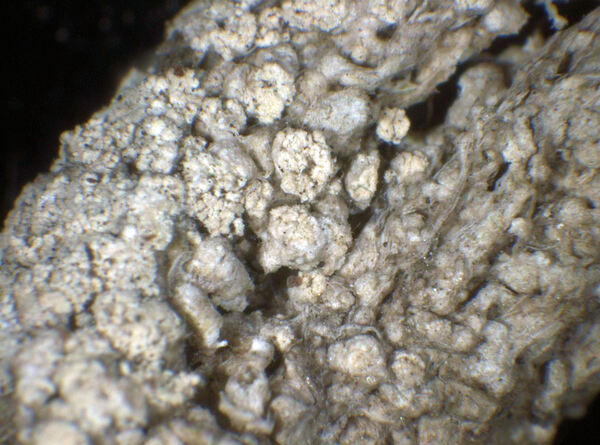Lecanora epibryon var. bryopsora Doppelb. & Poelt
in Poelt, Mitt. bot. Staatss. München, 5: 254, 1964.
Synonyms: Lecanora bryopsora (Doppelb. & Poelt) Hafellner & Türk
Distribution: N - TAA (Nascimbene & al. 2021), Lomb (Nascimbene & al. 2021), Piem (TSB 33081). C - Marc (Nimis & Tretiach 1999).
Description: Thallus crustose, episubstratic, whitish to pale grey, continuous to warted, sorediate. Soredia granular, whitish to very pale yellowish white, developing in initially discrete, then often confluent soralia. Apothecia rather rare, lecanorine, more or less round, sessile, strongly constricted to almost substipitate, 0.5-2(-3) mm across, with a reddish brown, often somewhat shiny, mostly flat disc, and a thick, smooth to crenulate-undulate thalline margin. Thalline exciple to 100 µm thick, containing small, irregular crystals visible under polarized light and not dissolving in K; epithecium red-brown, without crystals, sometimes with small oil droplets; hymenium colourless, 60-90 µm high; paraphyses simple or sparingly branched in upper part, 1.5-2 µm thick, the apical cells slightly thickened and to 3.5 µm wide; hypothecium colourless. Asci 8-spored, clavate, very thin-walled, with a K/I+ blue, tall tholus penetrated by a faintly amyloid apical cushion, the wall K/I-, surrounded by a blue outer layer, Lecanora-type. Ascospores 1-celled, hyaline, ellipsoid or narrowly ellipsoid, 12-19 x 6-9.5 µm. Photobiont chlorococcoid. Spot tests: thallus K+ yellow, C-, KC-, P-, UV-. Chemistry: atranorin and variable amounts of zeorin.Note: on mosses and plant debris on calcareous substrata; certainly more widespread in the Alps, but difficult to recognise, being often sterile. According to Malícek (in litt.) molecular data suggest that this is just a sorediate morph of var. epibryon.
Growth form: Crustose
Substrata: soil, terricolous mosses, and plant debris
Photobiont: green algae other than Trentepohlia
Reproductive strategy: mainly asexual, by soredia, or soredia-like structures (e.g. blastidia)
Commonnes-rarity: (info)
Alpine belt: very rare
Subalpine belt: rare
Oromediterranean belt: very rare
Montane belt: very rare
Submediterranean belt: absent
Padanian area: absent
Humid submediterranean belt: absent
Humid mediterranean belt: absent
Dry mediterranean belt: absent
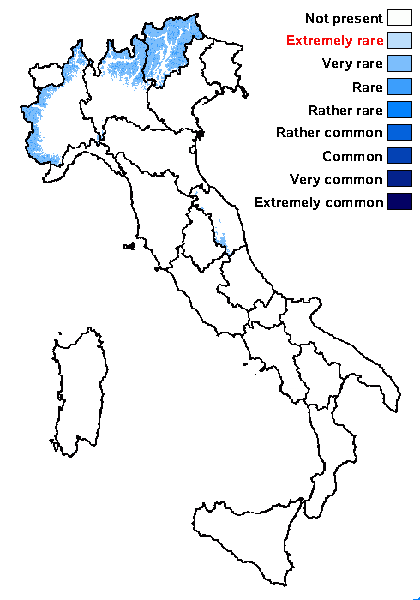
Predictive model
Herbarium samples
Growth form: Crustose
Substrata: soil, terricolous mosses, and plant debris
Photobiont: green algae other than Trentepohlia
Reproductive strategy: mainly asexual, by soredia, or soredia-like structures (e.g. blastidia)
Commonnes-rarity: (info)
Alpine belt: very rare
Subalpine belt: rare
Oromediterranean belt: very rare
Montane belt: very rare
Submediterranean belt: absent
Padanian area: absent
Humid submediterranean belt: absent
Humid mediterranean belt: absent
Dry mediterranean belt: absent

Predictive model
| Herbarium samples |
 Index Fungorum
Index Fungorum
 GBIF
GBIF
